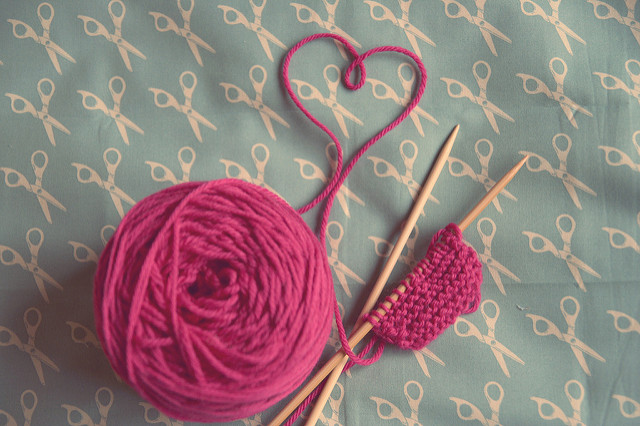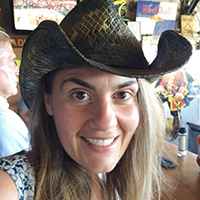I am a recovering sugar addict.
That’s not a euphemism for anything. It doesn’t mean anything cutesy like “chocoholic.” I am a full-blown addict. Sugar and carbohydrates were my drug of choice.
Sugar was ruining my life and not just because I was fat. I was a liar, cheater and a thief. I was all of the things an alcoholic is—only because of candy and cake. Yeah, no one ever said food addiction is sexy. So at 28 years old, I enrolled myself in a food recovery program, and I am more than 10 years sober from sugar, grains and starch.
Addictions wire us a certain way, and I have been an addict since I was a small child. I have traumatic memories of binge eating when I was five and six years old. So I have many wires that have been crossed for a long time.
Project knitters versus Process knitters.
After eight years of food recovery, I took up knitting. It didn’t take me long to learn that there are two schools of thought in the world of handcrafts: project versus process.
A project knitter knits to end up with something. You want a sweater, you knit it—you now have a sweater. A project knitter knits to completion.
A process knitter knits to knit. What you end up with at the end, if anything, is not really the point.
All knitters fall somewhere on this spectrum. For example, the most extreme project knitter might only make dishcloths that can be done in a few hours. While the most extreme process knitter might never complete anything at all.
I fall squarely on the process side. To illustrate: I first started knitting in March of 2014 and I finished my first project in November of 2015. For that intervening year and a half, I was knitting to knit with nothing to show for it.
How many dishcloths?
We live in a “project-based” culture. What have we accomplished? What do we look like “on paper?” Theoretically speaking, how many dishcloths have you knit? You completed a marathon? Wow! You wrote a book? Kick *ss! You lost 50 pounds? You rock! Each of these things is a project that has a beginning, middle and end—after which we put the proverbial check in the completed box. I believed that was the way I was supposed to live. But as I got older, my list of accomplishments didn’t seem very accomplished.
Soft in the middle.
There are reasons I never seemed to accomplish anything, and they have a lot to do with me being an addict. I was excellent at beginning projects. And I would imagine the end with great excitement. The problem, however, always came in the middle. The middle is where the work is. The middle is where the slog is. It’s uncomfortable, and I almost always quit. When we’re high enough, we don’t care about what we got done.
The most important lesson I’ve learned in recovery is to how to be present in uncomfortable moments. It might have been pain, fear, joy, boredom, excitement, shame, almost any feeling besides numb. When I ate sugar, I was eating those feelings.
In order to give up sugar I had to learn to respect every moment of my life as important, not just the moments where I checked the completed box. Or, to put it another way, I had to realize that my life is not a project—it’s a process.
Making friends with the uncomfortable.
Now I use process thinking in all aspects of my life. I don’t have to write a book, but I write five hours a day. I don’t have to run a marathon, but run two miles a day. I don’t have to knit a sweater, but I practice a silent knitting meditation every day.
When I chose process, I’m choosing to make friends with the uncomfortable parts of my life. I am choosing to persevere through the boring, monotonous, difficult and the painful. I am choosing the middle. Ironically, now that I’m living for the process, I have actually managed to complete projects. Life is made up of mostly middle, but if we work through the middle long enough, we will eventually get to the end.
I am not saying that project thinking is worse than process thinking. I have seen how being goal-oriented thinking works for many people. But for me, project thinking made me focus on proving my worth, and when I couldn’t measure up, I felt worthless.
When I live for the process, I get to be myself—expressing the life that is uniquely mine. I get to make commitments to myself. And by keeping my commitments, I get to experience the unexpected, but oh-so-welcome side effect of feeling valuable.
Relephant:
Addicted to the Sweet Stuff? 5 Steps to Re-Creating Your Relationship with Sugar.
~
Author: Kate O’Malley
Image: Flickr/Karine
Apprentice Editor: Julie Balsiger; Editor: Ashleigh Hitchcock







Read 1 comment and reply